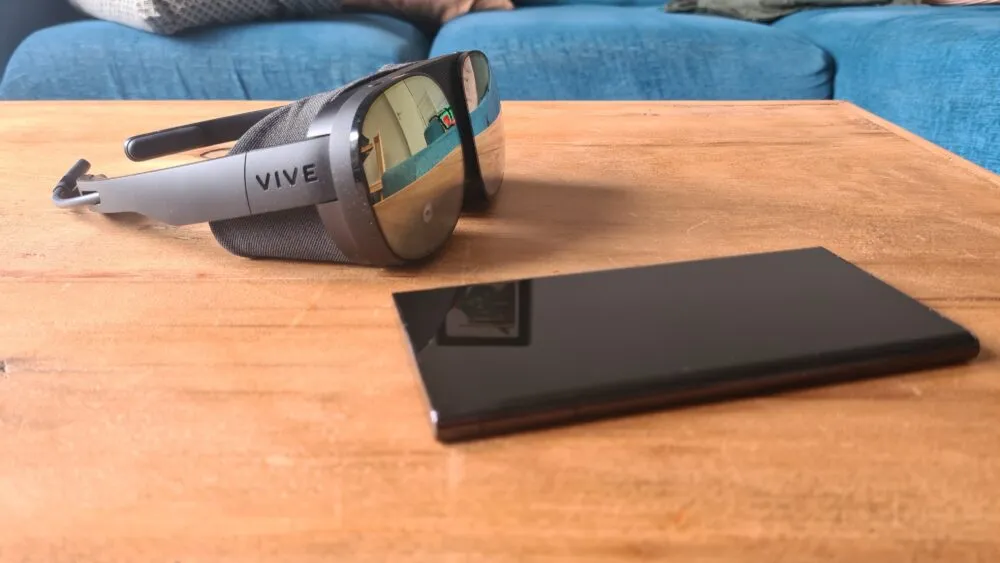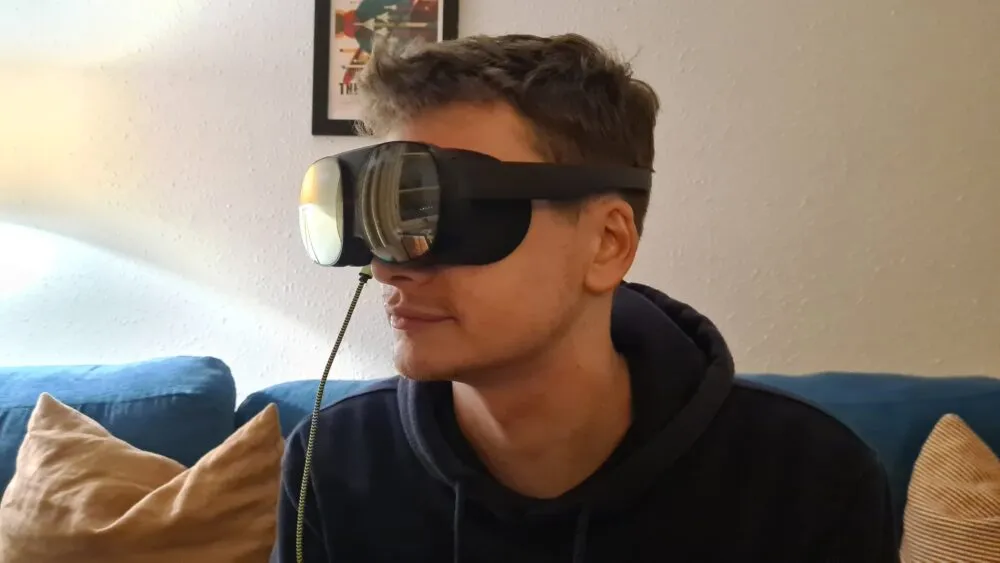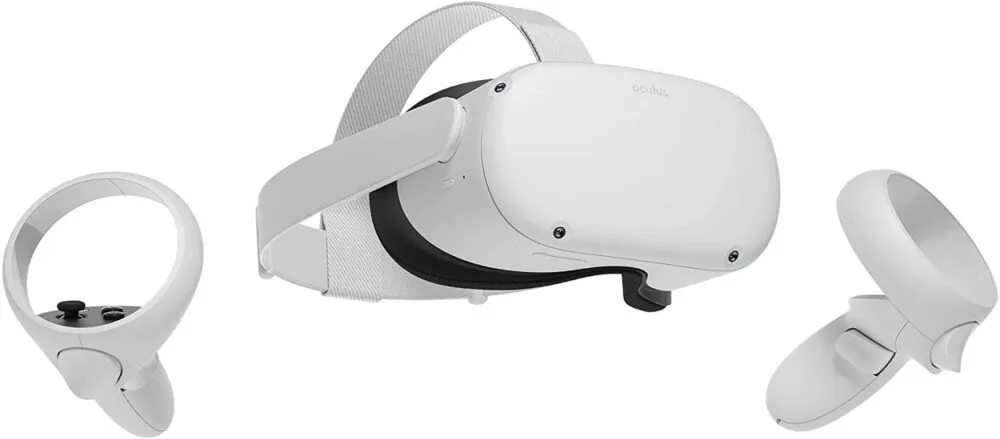SQUIRREL_13099578
Virtual reality (VR) has long been a technology that has performed well in the consumer world. Whether it's gaming, movie experiences, or more recently, the ever-developing metaverse possibility, VR headsets offer a unique experience.
However, unless you’re using a smartphone and a headset to put it in, VR headsets are usually bulky and require plugging into a computer. This is a problem HTC looked to solve with the HTC Vive Flow.
Requiring just a single USB-C connection and a Bluetooth-connected smartphone, the Vive Flow can be taken on the go. You can play games with it, watch movies, and even experience calming situations, games and meditations. HTC strongly pushed this latter capability.
So, I decided to put this to the test. In an arguably pretty chaotic world, could a VR headset finally set me free and bring me the tranquillity that’s ever so needed?

Setting up the headset
Getting the headset all set up was easy. You will need a smartphone that is compatible with the service, and you will need to have it plugged in to a power source with a USB-C cable when you’re using it.
Once I had the app, it was a case of signing up using my email, connecting my phone via Bluetooth and then quickly learning the controls. You use your smartphone as a remote, with different parts of the phone's screen acting as buttons – not the most intuitive setup but you get the grasp of it pretty quickly.
The headset creates a virtual square box around you which acts as your safety area. You’ll see the box appear when you try and step too far, stopping you from walking into walls or obstacles… this did not account for the charger I left on the floor and stepped on – my fault, not HTCs.

Once I was finally all set up, I used my new controller to awkwardly scroll through the Vive Flow marketplace. Unsurprisingly, a lot of the experiences the headset offers do come at a cost, usually ranging between a sub-£1 price and up to £10. However, there are also plenty of games that go up to £20+.
However, there are a few free experiences available in there, especially if you’re only looking to master your inner-Zen with a few light-breathing and meditation exercises. If you’re looking to play games or experience new worlds, prepare to hand out some cash.
Immersing myself in other worlds
My first stop on my journey for tranquillity was BBC’s The Turning Forest. In this experience, you’re dropped into a vibrant cartoon-like jungle, with a narrator telling you a story as you look around.

This included a calming soundtrack, a lovely story and some impressive 360° visuals. In fact, this was one of those experiences where I took the headset off and realised, I’d been watching this all unfold for quite some time, enjoying the peacefulness.
The lightness of the headset meant I could walk around enjoying it without constantly thinking about the hefty weight on my face. I crossed the sea on the back of a large creature, explored frozen lands and flew through the sky – a normal day in VR.
Spurred on by the experience of the world of The Turning Forest, I looked for more experiential VR apps. I swam (or awkwardly walked around my living room) with corals and small fish, and walked up a calming mountain while being told about its history.
While these experiences were easily my favourite part of the HTC Vive Flow, I found the quality often let it down, especially when trying to replicate real life situations. Objects were often blurry, even when I adjusted the googles to fit my eyesight.
Meditating with a VR aid
When you think calming, relaxing situations, an 189g pair of glasses sat on your face is unlikely to be your first thought, and that’s how I felt as well. This took some time to get used to, but once I did, it was actually quite easy to ignore.
In fact, this is one of the lightest VR headsets you can buy right now. This meant I was able to immerse myself for long periods of time – perfect for something I was keen to try with this headset, meditation.
Donning the headset and sitting in a quiet room, I first tried an experience called Cosmic Flow where calming spirals and shapes would fly past me accompanied by music… this was not for me. Feeling slightly overwhelmed and dizzy, I went back to the VR store and tried again.
I downloaded two apps that offered ‘meditation experiences’. The first app dropped me onto a beach during a sunset, with a relaxing voice talking me through a meditation with wave noises in the background.

This was actually pretty peaceful. Sure it would be better on a real beach, but surprisingly accurate. I tried another experience on this app that dropped me on a windy mountain. This could have been relaxing too, if it wasn’t for the mountain in the distance that kept glitching and spinning.
I tried a few other meditation apps, all of which followed a similar format – placing you in some relaxing scenery and guiding you through a calming experience. Some were better than others, but overall, none of it really blew me away.
Compared to a lot of other VR experiences, the HTC Vive Flow offers a lower resolution experience. Of course, this is a sacrifice you make for the portability but it does mean the beach, mountain or other calming place you find yourself is slightly blurry, or experiences some weird glitches in the distance that are hard to ignore.
Verdict
Did I experience peace and tranquillity through VR… no. Do I think it could work for other people? Actually, yes. During the meditation experiences, I was very aware that I was wearing a headset and it was difficult to not focus on that.
However, there were a few times where I became distracted by an experience and was surprisingly lost in it. When the headset keeps you distracted with a detailed yet calming experience, that’s when it worked its best.
For a futuristic wellness device, I’m not convinced the HTC Vive Flow can fill that gap. As a portable games console, and a way to explore stories, made-up lands, and learn about the world, I can see where the Vive Flow could have potential.
SQUIRREL_13099578
Alternatives
Meta Quest 2

Previously known as the Oculus Quest 2, the now-named Meta Quest 2 feels like the best overall VR headset on the market right now. It's not too expensive (cheaper than the Vive Flow, in fact) and has some impressive power. It's surprisingly lightweight and comfortable, it can run immersive and intensive VR games and does so at a high quality.
SQUIRREL_TEXT_13099582
HTC Vive Pro 2

Consider this as the older brother to the HTC Vive Flow. It's massive, pretty expensive and also packed full of impressive features. It has one of the best displays available from a VR headset and part of its bulky design means you get fantastic audio.
While it does have some massive and slightly unwieldy controllers, it is one of the best VR experiences around visually.
Read more:
